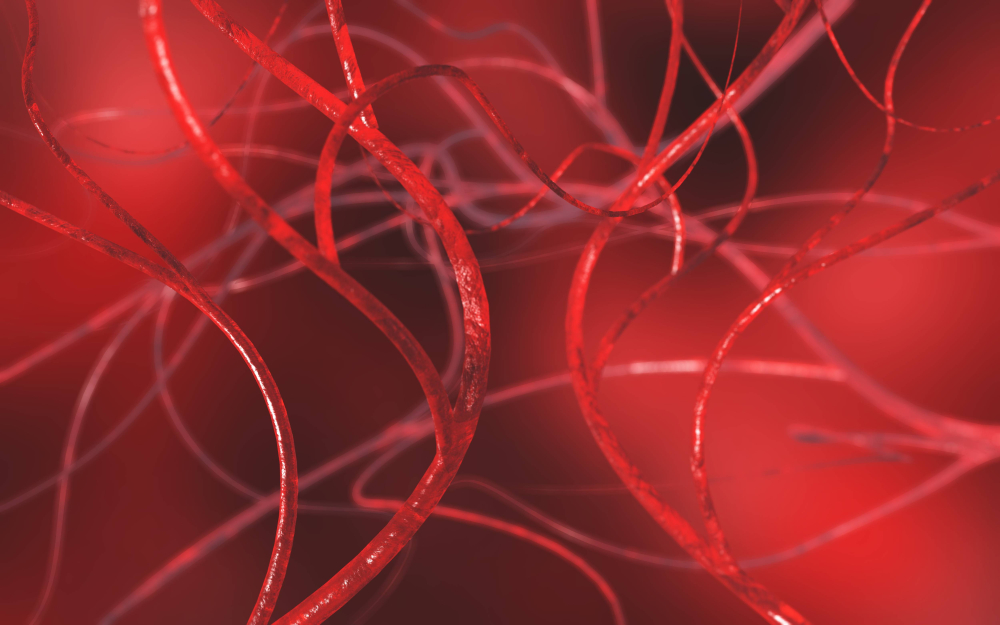New Atlas of Lung Vascular Cells May Advance PF Care, Treatment
Written by |

Note: This story was updated June 11, 2021, to clarify the Chan Zuckerberg Initiative supported the Human Cell Atlas Project, in addition to other scientific initiatives.
Researchers have created a comprehensive blueprint of healthy lung vascular cells, whose dysfunction is associated with pulmonary fibrosis (PF) and other lung diseases, allowing for the identification of two previously unknown cell subtypes.
The data, open to the public through an online cell atlas, are expected to help in better understanding what happens to these cells in lung diseases and in developing vascular cell-targeted therapies.
“If you want to return to normal, you need to know what normal is,” Naftali Kaminski, MD, the Boehringer-Ingelheim endowed professor of internal medicine and chief of pulmonary, critical care and sleep medicine at the Yale School of Medicine, said in a university press release.
“The assumption has been that all pulmonary endothelial cells were relatively the same,” Kaminski said.
Analyses leading up to the creation of the cell atlas were reported in the study, “Integrated Single Cell Atlas of Endothelial Cells of the Human Lung,” published in the journal Circulation.
Jonas Schupp, PhD, the study’s first author and a postdoctoral fellow in Kaminski’s lab, said this cell atlas “is like the Hubble telescope of biology.” Using it, researchers were able “to identify cell types that were indistinguishable before, as well as augment the understanding of discoveries made by others.”
Lung vascular endothelial cells — those that line blood vessels in the lungs — are key for the gas exchange that occurs between blood and inhaled air, and that allows tissues throughout the body to access oxygen-rich blood.
Problems with the workings of lung endothelial cells have been described in a number of lung conditions, including PF, pulmonary hypertension, chronic obstructive pulmonary disease (COPD), acute respiratory distress syndrome, and pneumonia.
In addition, the COVID-19 pandemic emphasized the existence of differences between these cells, as some people, particularly the elderly, are more susceptible to injury from COVID-19 infection.
“Despite the obvious importance of endothelial cells to lung function in health and disease, a detailed reference atlas of endothelial cells in the healthy human lung is missing,” the researchers wrote.
“The generation of [gene activity] profiles of cell types and their intercellular communication within the complex organ lung are tasks that are crucial to understanding the molecular function of the lung, and its dysfunction in disease,” they added.
Kaminski and his team, along with colleagues in the U.S., U.K., and the Netherlands, reprocessed and reanalyzed six publicly available datasets of single-cell gene activity of healthy lung tissue to identify and characterize lung endothelial cell populations.
Their study was funded by several international grants and by the Chan Zuckerberg Initiative, which among its efforts, supported bringing together scientists, engineers, and physicians to advance the Human Cell Atlas project, an international initiative to describe all cells in the human body.
Based on the activity of specific endothelial markers, the researchers identified more than 15,000 endothelial cells within lung tissue samples from 73 healthy people.
Distinct gene activity profiles allowed investigators to distinguish not only known endothelial cell subpopulations of blood capillaries, arteries, veins, and the lymphatic system, but also to identify two previously unknown subpopulations. Of note, the lymphatic system is a network of vessels that collect excess fluid (lymph) from tissues and return it to the bloodstream, while playing a role in waste removal and immune responses.
The newly discovered cell subtypes included lung-venous cells, localized in veins within lung tissue, and systemic-venous cells, localized in veins within lung airways.
Using these gene activity data, the research team also confirmed the identity of recently described subtypes of lung endothelial cells.
Further analyses of lung cell interactions underscored the importance of the communication taking place between endothelial cells and other cell types to maintain tissue health.
All endothelial cell subtypes were also found to be present in mice — “the most used mammalian model organism” in research — and the team was able to identify endothelial marker genes that were conserved in both humans and mice.
Notably, the scientists found that commercially available human lung endothelial cells grown in the lab lose their natural gene activity profile, emphasizing key differences between studies undertaken in living organisms and lab-grown cells.
“Our integrated analysis provides the comprehensive and well-crafted reference atlas of lung endothelial cells in the normal lung and confirms and describes in detail previously unrecognized endothelial populations across a large number of humans and mice,” the researchers wrote.
The new lung endothelial cell atlas is publicly available, allowing researchers elsewhere to conduct their own independent research based on these data.
“We hope that the availability of our data will accelerate the development of endothelial cell specific therapies in lung disease,” Kaminski said.






